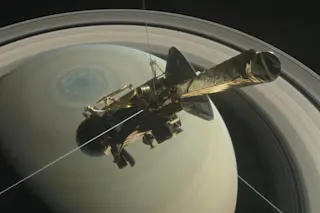In six new papers, researchers reveal incredible facts about Saturn using data from Cassini's final transmissions to Earth. (Credit: NASA/JPL-Caltech) Before it plunged into the atmosphere of Saturn on its final death dive, the Cassini spacecraft made 22 orbits of the planet that followed a path no probe had taken before: It flew between the massive planet and its rings. During those final orbits, Cassini’s Ion and Neutral Mass Spectrometer (INMS) spotted water ice and complex organic molecules flowing from the rings to the atmosphere of the planet: ring rain. But it turns out, “ring rain is more like a ring downpour,” according to Hunter Waite of Southwest Research Institute (SwRI), lead author of a paper on the new Cassini results published October 4 in Science. The rain itself wasn’t a surprise. “Based on previous work, scientists expected water was raining from the rings into Saturn's atmosphere,” said study co-author ...
Saturn's Ring Rain is a Downpour, Not a Drizzle
Discover Cassini's final transmissions revealing Saturn's unexpected ring rain and complex organic molecules crucial to its atmosphere.
More on Discover
Stay Curious
SubscribeTo The Magazine
Save up to 40% off the cover price when you subscribe to Discover magazine.
Subscribe













